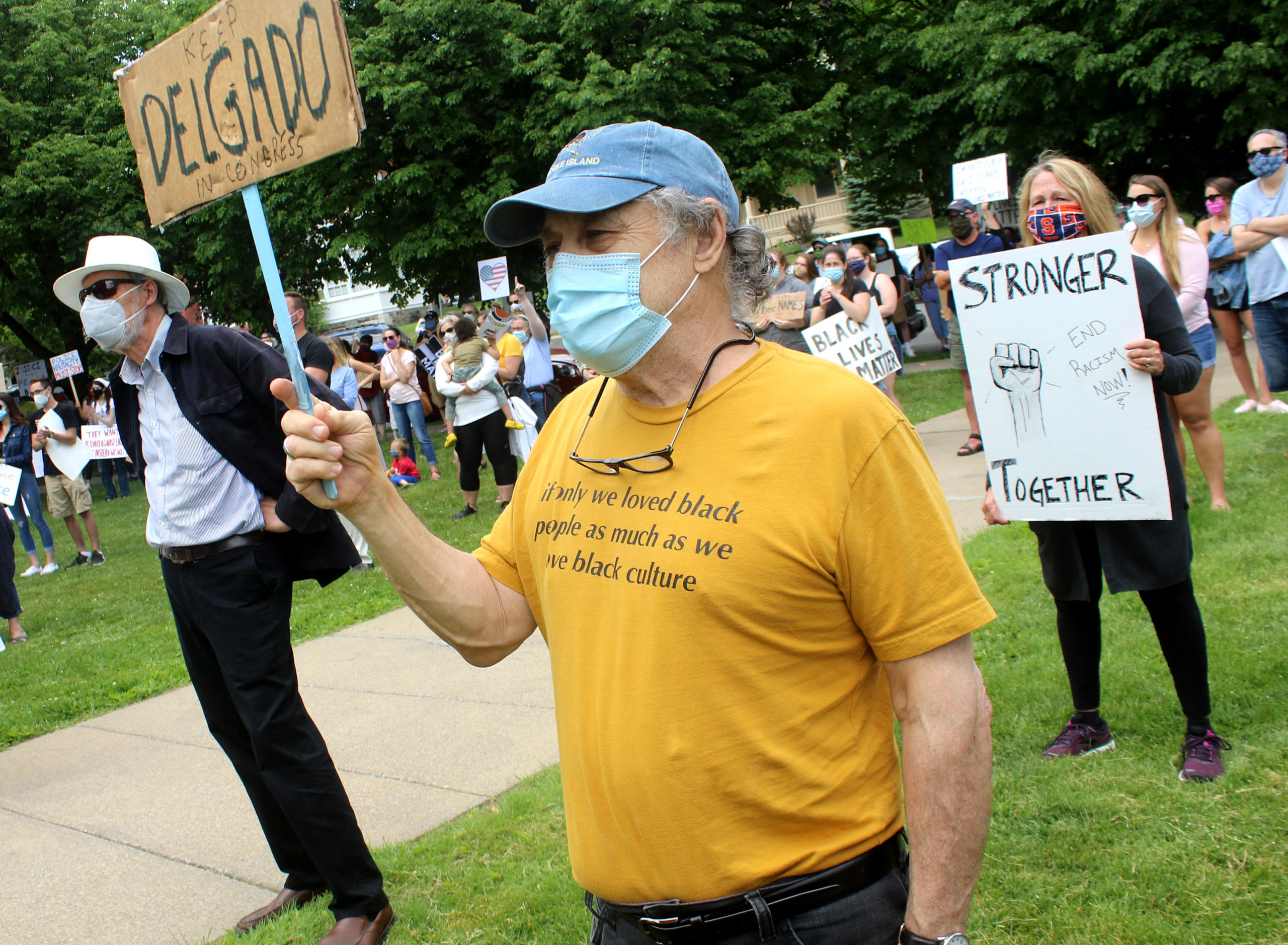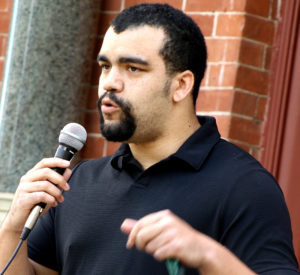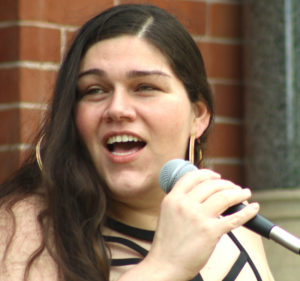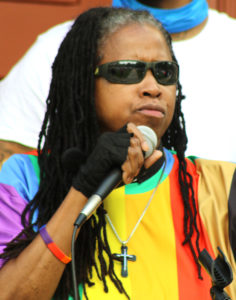EDITORIAL
Testaments Tell Us:
We CAN Do Better

At first, the “Defund the Police” initiatives surfacing nationwide seem like a truly awful idea: a blunt instrument to dissect a complex challenge dramatized again by George Floyd’s May 25 death while being taken into custody in Minneapolis.
But drilling down, benefits surface.
It’s only a slight exaggeration to say that all organizations in Otsego County – local governments, non-profits, churches, businesses large and small, even newspapers – are rethinking operations in light of the coronavirus disorientation.

parents could have
been killed.
If “Defund the Police” is a clean-sheet look at police department priorities, why shouldn’t law enforcement do what everybody else is doing right now?
•
It was hard to listen to personal testimonies of speakers at the Sunday, June 7, “Justice For George Floyd” rally in Cooperstown:
• Bryce Wooden of Oneonta, “a 25-year-old trying to be a good father to my future children,” recounted how in 2000, his white mother and black father – a teacher and a correctional officer – responded to a “bang, bang” on their door at 2 p.m. to find a gun pointed in their faces. They were grilled at gunpoint for a half-hour.

to be the wokest child.”
• Shannon McHugh, an Oneonta daycare operator who was in the 20 Under 40 class selected five years ago by Hometown Oneonta & The Freeman’s Journal, reported 10 officers searching her car after a routine stop, and finding nothing. She asked all of us to be “second eyes” when we happen on police stops.
• The Rev. LaDana Clark, the “outreach hip-hop pastor” who has preached at Cooperstown’s Presbyterian Church, described a harrowing series of events ensuing after she gave a cheerful “hi” to troopers on leaving Oneonta’s Walmart. “For the first time in my life, an officer put cuffs on me in Laurens, N.Y. I’m 58 years old,” she recounted. “I was disgusted.”
Diandra Sangetti-Daniels, Oneonta, a personal care assistant, related how she cried while writing down her experiences. Wesley Lippitt of Fly Creek, said only “a Guardian Angel” allowed him to speak at the rally: 10 years earlier, he had been chased out of Cooper Park and shot by a classmate.

This doesn’t catch the richness and drama of their convincing narratives. Even “Black Lives Matter” skeptics had to leave the Otsego County Courthouse lawn shaking their heads: Something’s wrong here.
•
So what is wrong here?
Oneonta Mayor Gary Herzig, Deputy Mayor David Rissberger and Police Chief Doug Brenner by week’s end plan to announce an initiative – perhaps a commission, a task force, an outside audit or a community survey – to ensure the OPD is following best practices.
That fits in with the emerging “Defund the Police” approaches: Today, police officers are being asked to do things they aren’t trained to do – social work, mental-health counseling, arbitrating domestic disputes, drug intervention.
Does it make sense to shift funding from police officers, SWAT teams and deadly weaponry to putting softer skills out in the field? We should ask that question in Otsego County.
Our county, with 60,000 people, has to be right up there in police per capita, with the OPD, the sheriff’s department, Cooperstown’s two officers, state police barracks at Oneonta, Sidney and Richfield Springs, town constables, DEC police, even armed security guards at Bassett Hospital.
This is all very expensive. Is our investment working?
•
Since George Floyd’s death, people are asking: Are police unions protecting their members from discipline or removals that might save lives? Officer Chauvin, charged in Floyd’s death, was in the top 8 percent of Minneapolis officers in terms of public complaints.
One study has found that the 5 percent of officers with the most complaints against them are responsible for 80 percent of civilian deaths.
That suggests a pretty easy way to eliminate 4/5th of cases like George Floyd’s.
Right now, we don’t know who those officers are, but that may change: Monday, the state Assembly passed the STAT Act (for Statistics & Transparency) that would make such data public and “help researchers and the public evaluate the effectiveness of criminal justice policies,” according to Speaker Carl Heastie. The state Senate should adjust it as prudent and pass it.
•
Going forward, the presupposition of black guilt, as attested to by the “Rally for Justice” speakers from personal experience, stands and must be addressed.
Let’s hope the City of Oneonta provides a model. The county Sheriff’s Department should move forward similarly, with Sheriff Richard J. Devlin, Jr., in concert with what’s proving to be the county board’s able leadership, chairman Dave Bliss, vice chair Meg Kennedy, county Rep. Dan Wilber, R-Burlington, who chairs the Public Safety Committee, and other reps.
Bryce Wooden, Shannon McHugh, Pastor LaDana and the others were convincing: Racism – or at least ignorance and insensitivity – exist here, in the police and, regrettably, ourselves. In our police, we should require objectivity and evenhandedness.
All of us – we whites in particular, including this editorial’s writer, given we’re 94 percent
of Otsego Countians; but all of us, Hispanics, blacks, arrivals from the Pacific Rim and Indian – should conduct personal audits and strive, not to accuse, but to accept and support our fellow humans.

